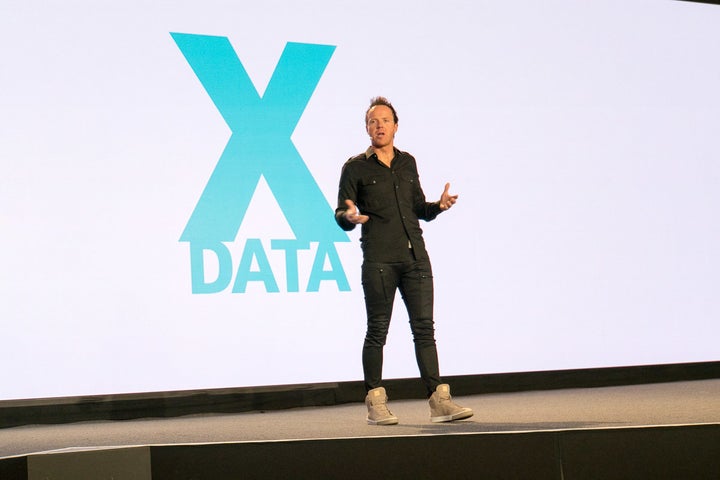“Most companies are O-Data rich, and X-Data poor.” - Ryan Smith, CEO at Qualtrics

Ryan Smith keynote during the Qualtrics Insight Summit 2017
In today’s rapidly moving, data-rich, technology-driven environment, businesses large and small struggle with one blaring challenge: what the heck to do with all the information flooding in from various channels.
Whether it’s customers, employees, products, or brand, all the data has to be operationalized and managed so that companies have a shot at competing and ultimately, surviving.
It’s not just companies who spend inordinate amounts of time parsing through millions of data-points. Being a human in today’s world means we – often unknowingly – are required to constantly make decisions about what to absorb, ignore, and apply for effective decision-making. Simply put: it’s exhausting.
After all, we are not robots; and for every piece of information that comes across our radar, we expend some amount of emotional and mental (if not physical) energy attempting to process it.
This human inability to make sense of massive amounts of data is where technology shines. In fact, the last decade has seen an explosion of dedicated to relieving humans of the burden of excess info and saving us from our own, human limitations – or at least that has been the sentiment.
But for anyone who has lived long enough to know how innovation really works, how we long for evolution, or how the pendulum eventually swings back, it would be safe to say that we have reached the pinnacle of operational data (O-Data) – which tells us what has happened in the past in an organized fashion – and await a new form of data that tells us why these things have happened and what, perhaps, may happen in the future.
In other words, it is no longer enough for a machine to tell us that we will never find true love based on past experience; we want to know why, gosh darnit, this is the case and how, for goodness sake, we should change our hair, our shoes, our job in order to make someone fall in love with us.
This is where humans shine, and Experience data (X-Data) makes its mark.
Last week, at their annual Insight Summit, Salt Lake City-based Qualtrics made an announcement that they had begun laying the groundwork for the next phase of our data-driven evolution. For nearly fifteen years, the company has been building a foundational matrix of customer, brand, employee, and product data from over 8,500 global companies (think JetBlue, Under Armour, Allianz, and Airbnb), through their survey technology.
“Most companies are O-Data rich, and X-Data poor,” explained Qualtrics CEO Ryan Smith, when I sat down with him to learn more about their company vision during the Summit. “What this means is that there are huge gaps in terms of a company understanding what’s happening, why it’s happening, and how to adapt in real-time.”
To his point, most companies store data about their customers in one place, data about their brand in another, while employee and product data are likewise organized and analyzed in completely different silos.
Matt Spackman, Vice President of Business Insights & Analytics at Kum & Go (a long-time Qualtrics customer), offered this analysis during the Summit: “In the convenience industry, there are only so many ways we can differentiate ourselves from our competitors. Our Operational data will tell us what people have purchased, how frequently they shop, how are stores are performing, etc. But what we want to know is what people would like to purchase, how we can encourage them to shop more frequently, and where we can put stores so they are most convenient. This is why we spend so much time and energy in getting direct feedback from our customers, because they’re the ones that will tell us how we can be successful.”
In essence, they use X-Data to inform decision-making about all other aspects of the brand.
When the walls between silos come down, what emerge are patterns of human behavior across the board that can equally inform and connect these various areas of an organization. Ultimately, the information is richer, more meaningful, and can get to the human-factor data, beliefs, and emotions that can offer companies more insight into future decision-making.
“How do you show someone you care?” added Smith. “You can only do that by understanding their experiences, then solving their problem or meeting their need on a personal, emotional, level. That is what Experience Data will do, and something Operational data will never be able to do.”
I believe him, just like I believe it takes a long time to build a great company. Because truly great companies spend inordinate amounts of time answering deep, fundamentally, difficult questions: like how to shift from a technology-driven world that realizes the power of organizing data, to a data-driven world that realizes humans still hold all the power.
